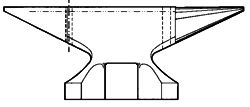German Pattern Anvils
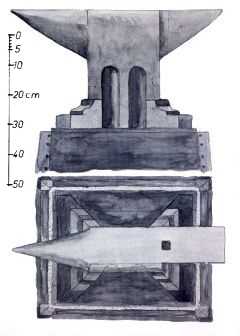
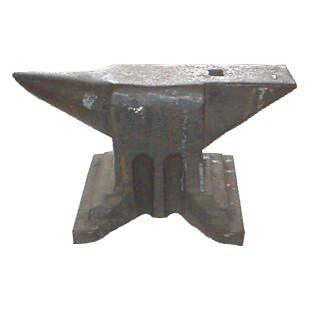
|
| ABOVE: Drawing of "Austrian" pattern anvil in Otto Schmirler's Shop from Werk und Werkzeg des Kunstschmieds and photo of a similar old anvil. Notice the tall rectangular waist and the gently curving heel with narrow edge. The Otto Schmirler anvils are cast steel but the old anvil above is probably a forging. Cast anvils generaly do not become so gracefuly swaybacked from use. |
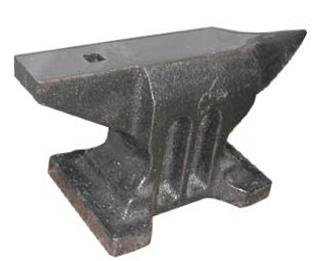 |
|
ABOVE: Modern cast steel anvil of similar pattern.
Sadly the pattern maker missed the fine design points of the original.
Notice the heavier heel and the cutout in the waist under the heel breaking the straight vertical line.
The "church windows" do not continue to the base and extend above the line between horn and heel.
The base is also considerably narrower than the classic pattern and the overall proportions are shorter.
Also notice that the hardy hole is further out on the heel where it has less support.
This is both good and bad. The good is that it leaves more open space on the face of the anvil.
It is also easier for the foundryman to make the shorter cored hole.
What is bad is that it is not nearly as solid a place for tooling as when supported next to the body.
The thick heel is also a cast anvil convention, the pattern maker worrying about strength.
|
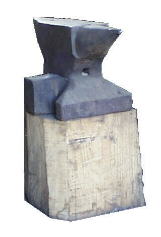
German Double Horned Anvil in Josh Greenwood's blacksmith shop. This 450# forged anvil was purchased in Germany. It is the anvil featured in the scale drawing below. EuroAnvils referenced this drawing to make their "Euro Anvil" Click for full drawing. |
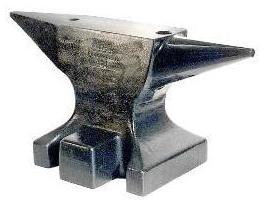
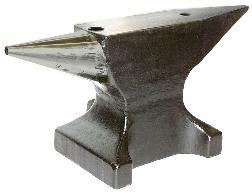
|
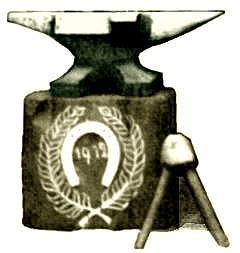
LEFT: 1912 German double horn with side clip and sloped edge. Detail from Gill Fahrenwald 2006 Military Blacksmiths Calendar, September |
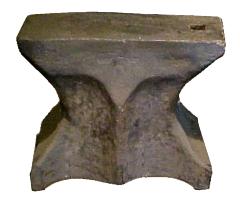
RIGHT: Antique German Hornless style anvil. These were popular throughout Europe and the style dates at least from the 1600's. Bernard Tappel's shop, BAM. |
|
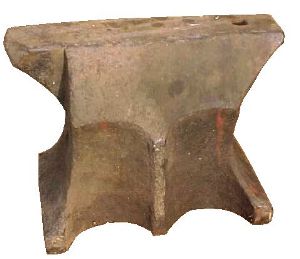 LEFT: It has been speculated that this is an armorer's pattern anvil and that the flat back side is so that it can be
laid on its side and the "church window" depressions used for forming curved items like arm and leg armor.
It also sets on end so the large radi can be used.
LEFT: It has been speculated that this is an armorer's pattern anvil and that the flat back side is so that it can be
laid on its side and the "church window" depressions used for forming curved items like arm and leg armor.
It also sets on end so the large radi can be used.
This is another anvil pattern with clean classic lines that appear to have been developed over a period of time. From the Josh Greenwood collection. Click image for more views. |
